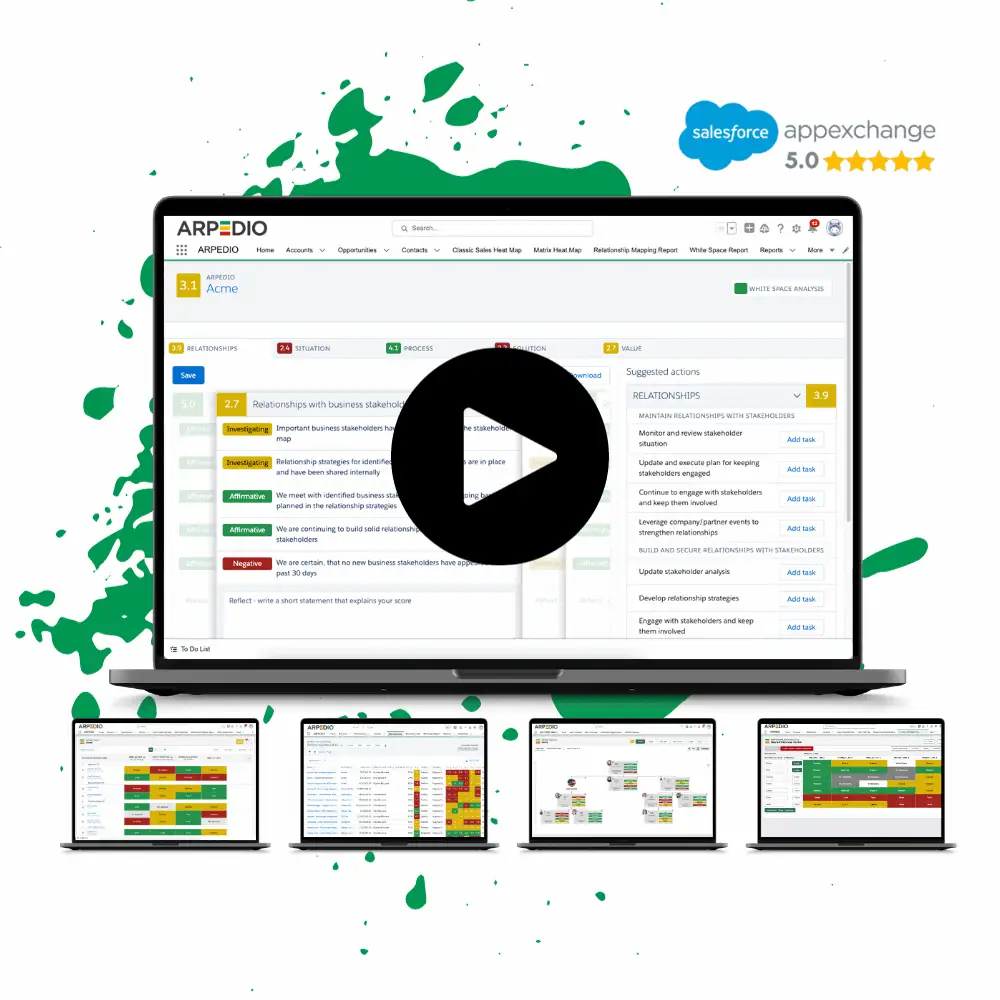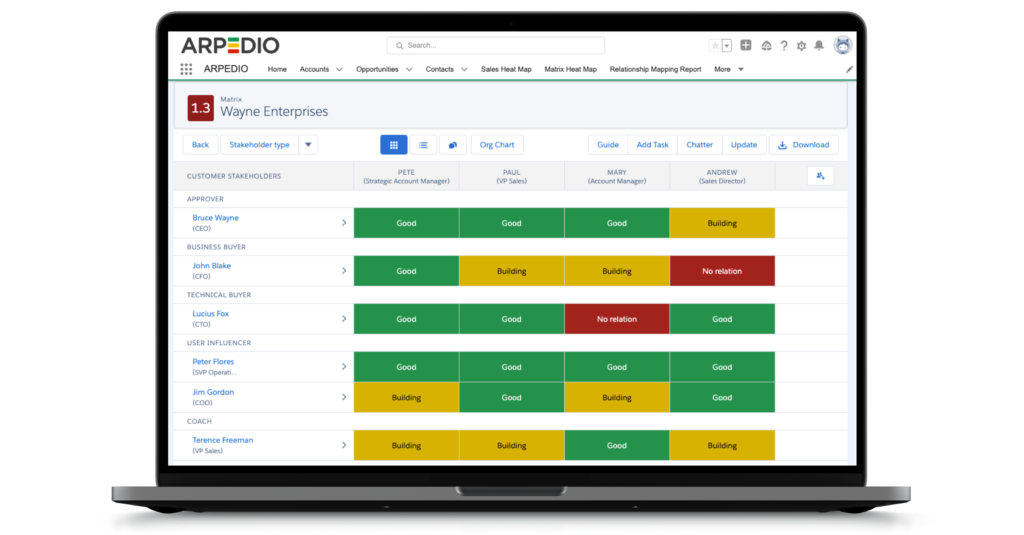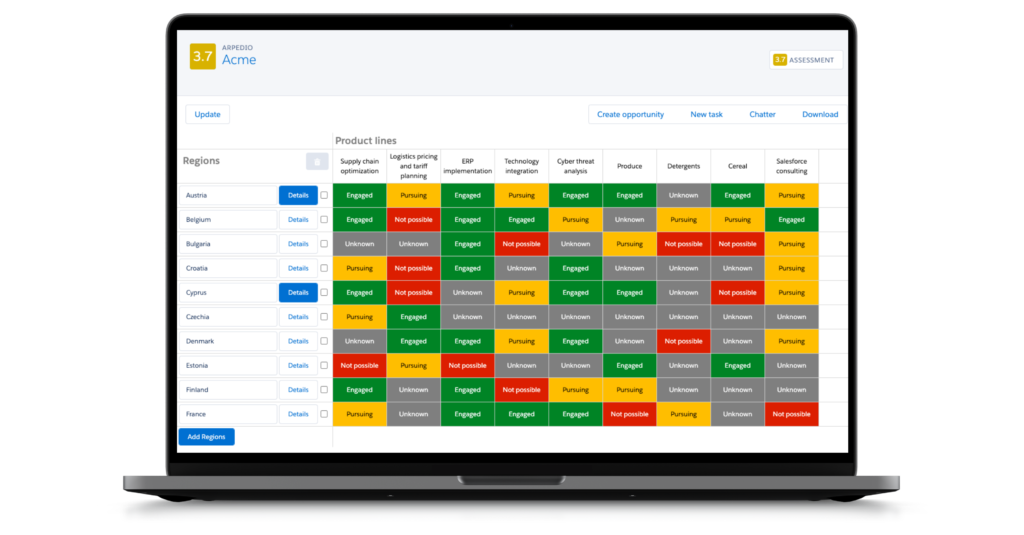If you’re not doing account-based selling (ABS), chances are you’re not selling at your full potential. In this much anticipated talk with Chet Lovegren, we look at ABS as a strategy that continues to work, and how you can combine it with product-led growth. We’ll touch upon land and expand strategies, how to align teams internally, and why putting customers first and leading with empathy is so powerful to your business.
Account-Based Selling: Establishing Collaborative Buy-in
When Chet is asked about the importance of account-based selling, he promptly replies:
“Well, how else are you going to sell?”. If you’re doing B2B sales – whether you’re aware of it or not – you’re most likely already doing account-based selling, hence ‘business to business’. Even though we’re targeting specific prospects and personas that we’d like to talk to, we’re still looking at the business as a whole: we try to work on behalf of our business for their business, and we try to find the business goals and challenges that align with the value propositions that we offer. Thus, ABS is not just a fancy buzzword; it’s a strategy that sales professionals use on a daily basis to target businesses, rather than just individuals.
With that said, the person still matters. Even though we’re targeting accounts in account-based selling, it’s important to focus on the person as well. That’s why Chet recommends that sales teams work with PERSONAlization: talk specifically to the personas and address the problems they’re interested in solving, and understand that these challenges will vary depending on the specific personas. Some personas might have overlapping challenges, but some will also have unique individual challenges. Targeting these specific personas with tailored messaging is how you’re going to get collaborative buy-in, and that’s what the account-based selling approach is all about. If you manage to target all these different personas in an account, you’ll be one step closer to getting collaborative buy-in. And if you keep working on your stakeholder relationships, best case scenario, you might even reach a point where they’ll be doing the selling for you. We call these stakeholders ‘Champions’, and ultimately, you want as many of these as possible.
So, if you’re working with the account-based selling strategy, Chet highly recommends that you target multiple personas. Too many SDR and Sales teams typically only target one similar persona, and that’s a big problem. If your relationship with that one persona doesn’t go anywhere, you won’t know how to get buy-in from anybody else, and then your opportunity is dead. However, when you talk to multiple people, you form a coalition, and the more buy-in, the faster you close the deals.

Chet Lovegren, Director of Sales Development at Pavilion
Chet is a 10+ years sales professional. He went from individual to senior level contributor before jumping into leadership in the sales development world focusing on business growth and outbound processes: account-based strategies, targeting accounts, working with personas and creating relevant messaging. Currently, Chet’s working as Director of Sales Development at Pavilion with a main focus on building the outbound sales team. On the side, Chet spends his time with career coaching as well as sales and leadership development.
Product-led Growth – Let the Product do the Selling for you
The definition of product-led growth comes in many shapes and sizes. But according to Chet, product-led growth is when the product itself is leading a(n) (up)sale rather than an actual salesperson. Of course, at the end of the day, somebody has to sell your product no matter how great it is, e.g., when upgrading subscriptions, you still have to talk to a salesperson. But when the product itself is so good and solely by experiencing it, or using it, the customer already knows that this is something they want to make a commitment for, this is product-led growth. Essentially, it all comes down to how much of your business is being driven by your product.
And why is this approach so valuable, you might ask? Because it’s hard to prove value up front before a customer actually starts using a given product or service. The opportunity to actually experience the value firsthand is a great way to generate leads, and then, once people see the value, it’s much easier to start talking about additional available products and/or services.
Examples of ways to support a product-led growth approach:
- A freemium version
- Restricted credits
- Free trial version(s)
- Proof of concept(s)
- A pilot scheme
Land and Expand
Now, not every company has this product-led growth model, or can leverage this model. However, a different yet similar way to think of this is the ‘Land and Expand’ method, which basically means that your existing customers do the selling for you. In other words, if your existing customers see so much value in your product that they recommend it to others, or that others take notice of the results of the product and want to try it themselves, this is ‘Land and Expand’ – and this too can be a highly effective sales approach. E.g., if one department starts using your product or service, another team is likely going to want to start using the same product/service when they discover the value. Or at least, it can be a foot in the door, and a great chance for you to prove your value.
Bottom line, in any case where the purchasing decision is centered around your product being (one of) the key drivers, and you offer customers to experience your product as a means to develop your company, this is product-led growth. Whether somebody’s already buying your product and this spreads like a ripple effect to others who want part of it, or if you’re offering free trials, etc., for potential customers to experience the value of your products before purchasing, both can have a significant positive impact on your business.
Ensuring Alignment Across Departments
Chet highlights two factors that play a key role in ensuring internal alignment across Sales, Marketing and Customer Success: (1) Make sure all departments are personally invested in reaching company goals, and (2) rethink how you pay your account executives.
1. Ensure more skin in the game
Chet’s number one recommendation for securing alignment across departments is that everybody gets more personally invested in their organizations, and thus have a more vested interest in its success.
A way to ensure more skin in the game and ensure that everyone is working towards common goals is to define key metrics and make sure everyone is measured on these. For instance, Marketing needs to be measured on several activities all the way down the funnel. Marketing needs to be held responsible for customers that churn that were sourced through e.g., webinars or other marketing related content, just like Sales are put to shame for selling the (unattainable) dream. Because yes, Sales has a part to play in customer churn, but Marketing has equally as much of a part – especially if Marketing is very driven on the inbound side and doing a lot of work for that.
Too often we hear Customer Success pointing their fingers at Sales saying, ‘you sold them stuff that wasn’t on the roadmap or didn’t exist, or things you know we can’t do’, and Sales blaming Marketing for bringing in unqualified leads, and so on. It’s constant finger pointing, and that’s because everybody’s measured on a lot of different metrics, which is not ideal for ensuring alignment across departments.
Nevertheless, the metrics and the KPIs are of course important, but the most important metrics that we’re all concerned about are revenue and churn, right? So why not make all go-to-market leaders contingent on that? If everybody works towards a unified goal, every department would of course want to meet their respective KPIs. And that’s why Chet stresses that we should all have those key performance indicators that tell us if we reach our targets (or above) to know if we’re successful in our work. This will help everyone get more invested and thus ensure alignment across all the different departments.
2. Reevaluate how you pay your account executives (and offer professional development)
What we often see is tenures of 12-18 months. Part of the reason for this is that the Account Executives don’t get any professional development, not to mention the fact that most managers don’t know how to manage: 88 percent of managers never received any kind of formal training. And coaching and management is 60 percent of the reason sales reps choose to either leave or stay at a company. Therefore, training, coaching and professional development is essential.
But even more importantly, it’s about building commitment. And what better way to build commitment than to acknowledge your employees. For instance by structuring more payouts as upsells happen or things progress, and then aligning these payouts internally. E.g., if an upsell hits X, then not only should the Customer Success team get a piece of the pie, the Account Executives should be rewarded as well. This way the two teams will work together in tandem, and this can really drive the urgency to get their foot in the door with an account. It’s a great way to ensure that more things become – and stay – top of mind, as both parties can potentially make money off these accounts down the road. And this is why leaders need to reevaluate how they pay and reward their account executives.
If you don’t, your sales reps will try to pivot these massive deals that clients don’t want to sign up for or commit to, to get as much money up front. And this is not sufficient. Most clients want to start at a smaller scale and try the product with a certain part of their business first, making it difficult to succeed for this type of sales rep. And as a Sales leader you definitely don’t want your salespeople to turn and burn every 12 months. In Chet’s opinion, it’s much more affordable to take the time to figure out a more equitable and loyal commission scale for your sales reps, all the while you’re doing ‘Land and Expand’ programs to keep people around for two to three years than to have to hire every six months. Noone wants to spend all their time interviewing, onboarding and training.
Bottom line, make sure every department and every employee is invested in your company. And any executive leader should really think about how they measure things and acknowledge their employees through structured payouts and professional development to ensure internal alignment.
Ready to start taking advantage of sales enablement technologies like account-based selling? Ramp up with ARPEDIO’s account-based selling platform.
Putting the Customer First
One of Pavilion’s core values is “members first”. ‘Delighting members is our north star’, Chet says, and goes on to describe how taking the time to help members out, and making sure that they’re getting the value they need is a big part of what Pavilion is all about.
When you’re able to put your customers first at all times, it can really help your sales team not come off as pushy. Also, when you act in the best interest of the person you’re talking to, it can also help your Customer Success people better understand and handle customer complaints because the approach will be from a much more empathetic point of view.
Often, the Customer Success culture lacks this. They’ll just say ‘oh well, you’re not using enough of the product, go buy more’, and this approach definitely won’t get you anywhere good. That’s why it’s crucial to always put the customer first and work towards ensuring that your clients are getting the most possible success out of the business they’re giving you. This will pay off tenfold.
To really be successful with this ‘customer first’ approach, it’s important that everyone in your organization is thinking about this the same way. Everyone should be clear on and committed to putting the client first and always choosing to come from kindness. According to Chet, we don’t see this a lot in the world of sales – especially in the go-to-market roles, where focus is often first and foremost on hitting the numbers. There’s undeniably a lot of pressure in the go-to-market roles. But, if you can focus more on empathy and kindness and being successful and unlocking people’s potential, this is likely to have a trickle-down effect throughout your organization and support employee buy-in.
Key takeaway
Empathy and vulnerability can – and should! – coexist with sales. If you’re only taking one thing home, this is it. We need to bring more empathy and vulnerability into the sales profession.
Sometimes people don’t perform, and that’s okay. Stuff happens, and in Chet’s experience as a sales leader, 80 percent of the people want to do the job, and they want to do it well. Then there’s the remaining 20 percent that aren’t going to do the job, and that’s okay too. Those are departures – they either need help, or they need to be helped out the door. Sales leaders should focus on the 80 percent – the future executive leadership of your organization. Things are going to go wrong, people aren’t going to finish projects on time, people are going to miss quota, it happens. Don’t forget that once upon a time, you were an individual contributor, and you probably missed quota sometimes too. Noone’s perfect, and some sales leaders tend to forget what it was like. That’s why it’s crucial to continue to walk in the shoes of the people that you’re leading, as well as your customers and prospects.
Sales leaders need to understand that it’s okay to train your SDRs to show empathy and vulnerability in cold calls for instance. If you call someone, and they’re in the car on their way to pick up their kid from school. Don’t just stick to your script, lead with empathy instead and say ‘No worries, I just wanted to have a brief conversation with you, but maybe I could send you an email instead about why I called, and we can decide if it makes sense to schedule a call for when you’re less occupied. Does that sound fair?’
This way, you lead with empathy, and the person on the other end of the call will most likely sit back with a much more positive feeling than if you insisted on selling to them at that moment. There’s such a lack of empathy and vulnerability in a lot of go-to-market roles these days, and in the sales industry as a whole. For this reason, Chet is convinced that if and when you do operate in this regard, it stands out and people remember it.
Chet hopes that we can make a positive change and make empathy and vulnerability the norm in Sales. We of course still need to hold people accountable if they don’t do their job, but we should try to dig a little bit deeper and interrogate the outcomes and not the people.
A big thank you to Chet Lovegren for sharing his big passion for Sales Development and how to leverage product-led growth strategies and customer success stories in your account-based selling approach.
Watch or rewatch the LinkedIn Live here:

Maximilian Opp, Head of International Sales
+45 53 50 78 33
max@arpedio.com
linkedin.com/in/maximilian-opp/
Follow us on LinkedIn to get all the newest perspectives and insights around strategic relationship management and sales innovation.

Maximilian Opp, Head of International Sales
+45 53 50 78 33
max@arpedio.com
linkedin.com/in/maximilian-opp/
Follow us on LinkedIn to get all the newest perspectives and insights around strategic relationship management and sales innovation.
#1 Account-Based Selling Platform
Powerful alone. Superior together.
Boost win rates and reduce sales cycles. Enhance forecast accuracy.










